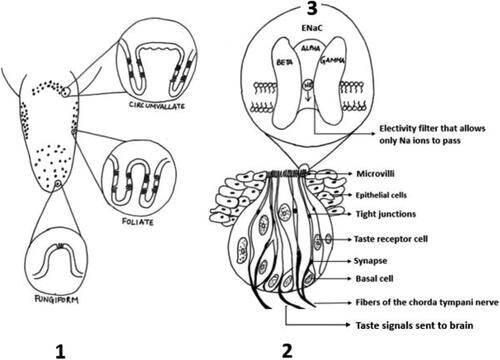Figures & data
Figure 1. Depiction of tongue and taste buds in rats: (1) taste receptor cells within the papillae on the tongue and cross section of three types of papillae- circumvallate, foliate, fungiform. (2) Cross section of a taste bud with its components. (3) Cross section of ENaC channel present on the taste bud. Rats have 3 ENaC subunits, while in humans there is an additional ENaC-δ subunit present (adapted from McCaughey Citation2019; McCaughey and Scott Citation1998).

Figure 2. Transient receptor potential vanilloid-1 (TRPV1) [adapted from: Ahern et al. (Citation2005), and Aroke et al. (Citation2020)].
![Figure 2. Transient receptor potential vanilloid-1 (TRPV1) [adapted from: Ahern et al. (Citation2005), and Aroke et al. (Citation2020)].](/cms/asset/1125340d-079b-43c6-8ae9-3451940c6876/bfsn_a_2365962_f0002_b.jpg)
Table 1. Key receptors activated by minerals and amino acid and the taste qualities elicited by them.
Table 2. Available salt substitutes and their applications.
